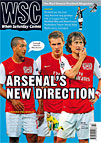 The struggle to become Asia’s top football executive has just begun, and it mirrors wider continental conflict, writes John Duerden
The struggle to become Asia’s top football executive has just begun, and it mirrors wider continental conflict, writes John Duerden
Mohammed Bin Hammam’s global profile has certainly improved in recent months with fans and media outside Asia now familiar with the shiny pate and the goatee. Unfortunately for the Qatari this isn’t a consequence of becoming the president of FIFA. He is not even president of the Asian Football Confederation (AFC) any more after being banned from all football activities.
His crime? According to FIFA’s ethics committee, it is buying the votes of Caribbean Football Union members during the presidential election against Sepp Blatter, an act that earned him a temporary suspension on May 30, just two days before the vote was due to take place. According to supporters, it was having the audacity to challenge the slippery Swiss supremo at all. For the second time running, Blatter ran alone, while on July 23, the ethics committee turned Bin Hammam’s yellow card into a permanent red.
After nine years in charge of Asian football, the 62-year-old is not about to give up his seat at AFC House in Kuala Lumpur without a fight. Claiming that the committee is biased, he is to appeal the decision. That will take time but he has that on his side as the AFC agreed not to elect a new president until May 30, 2012, a year from his original suspension, at the earliest.
Labelled secretive and dictatorial in his running of the confederation, he did at least manage the football equivalent of running the trains on time and more besides. There is money pouring into the game from both outside and inside the continent, the Asian Champions League was introduced in 2003 and has prospered, his Vision Asia programme has helped some of the continent’s lesser lights, and standards have risen all over the continent, albeit inconsistently.
In Asia, progress is always going to be inconsistent. The sheer size of the continent and its population is both blessing and curse. It brings importance and growing influence but its cultural, religious and linguistic diversity makes it hard to govern. The divisions are strongest between the western and eastern sides of the continent. Bin Hammam did well to keep a lid on much and was fairly even-handed. Despite past battles, there would be no real problem in Seoul, Beijing or Tokyo if the Qatari was to continue in office. The issue is that nobody expects that to happen. The talk around Asia is that Bin Hammam is finished and now it is all about his successor.
East Asia’s big boys believe that it is time to bring the presidency back. South Korea, Japan and, to a lesser extent, China feel that the smaller nations, especially from the west, are much more concerned with political power for its own sake rather than genuine football development for Asia. Korea and Japan perform at World Cups, appear at FIFA Club World Cups and develop and send players to the big leagues but at the same time have seen their influence in the AFC diminish. Suspicions about the west are shared but what to do about it is a different question. The eastern bloc is rarely a bloc at all, unsurprising with the history between China, Japan and South Korea.
China’s Zhang Jilong is the acting president and a contender. Japan wants an East Asian president but not one who is Chinese. The Japanese grew tired of the AFC’s machinations but as improvements have come on the pitch, the country wants more influence off it. The popular head of the Japan FA, Junji Ogura, is too old to run. Korea’s Chung Mong-joon is the highest-profile figure in Asian football politics but the former FIFA vice-president has, as yet, given no indication that he has lost his traditional indifference to Asia.
The western side is much more likely to back a single candidate, though it remains to be seen who that is. Bahrain FA president Sheikh Salman ran Bin Hammam close in a May 2009 election for his seat on FIFA’s executive committee and is a possibility. UAE’s Yousuf Yaqoob Yousuf al-Serkal is another. There is room for a compromise candidate, probably from south-east Asia, and Malaysia’s Prince Abdullah Ibni Sultan Ahmad Shah could fit the bill. And Bin Hammam? As if we needed reminding, 2011 has shown that those in power hate to give it up but his campaign to clear his name is likely to be not much more than an interesting sideshow to the main event.
From WSC 296 October 2011
